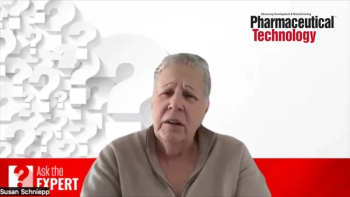
- Pharmaceutical Technology's In the Lab eNewsletter, December 2023
- Volume 18
- Issue 12
Addressing the Analytical Challenge of Meeting Quick Turnaround Times (AAPS PharmSci 360)
Hollie Barton, senior director, Chromatographic Services, for the PPD clinical research business of Thermo Fisher Scientific, discusses ways that labs are addressing the pressure of rapid analytical turnaround times.
Hollie Barton, senior director, Chromatographic Services, for the PPD clinical research business of Thermo Fisher Scientific, spoke with Pharmaceutical Technology® at AAPS PharmSci 360 where she discussed the challenges of increased demand for longer lead times from analytical labs in an environment where clinical pressures are calling for drastically reduced turnaround times. In this interview, Barton emphasizes how one such group, BioA labs, has been addressing the need to move faster when cycle times are being determined by methodology.
“Actually, the labs are kind of taking a two-tiered approach to that. They are doing some internal and some external things. Internally, we're watching BioA labs move to 24 hour, seven-day- week work shifts [but also with] fluid shifts within that. When I say fluid shifts, we're really looking at folks to work possibly five–eight hour shifts, and then the next week possibly moved to four–10 [shifts], maybe even three–twelve [shifts], to attack [the] methodology they're having to run,” Barton says.
She also notes that project management is being added to the BioA labs. Normally, those lab personnel reside at the central laboratory or clinical sites. “What we're seeing is them being placed in the BioA lab to provide a single point-of-contact with communication that's flowing through. [That] addition has really cut down on the work that the PI [principal investigator] has to do in regard to communication and point-of-contact,” Barton explains.
This slight change has allowed labs, particularly PIs, to better focus better on the science, which is where the investigators’ attention should be, Barton emphasizes. Barton also notes that, externally, she is seeing BioA labs pushing back on contracts, especially in situations where there are no central laboratories involved. “That moves the needle in the wrong direction if you don't bring in the central lab because the BioA lab should not be performing those responsibilities,” she observes.
“We're also seeing where we've added additional teams to the back-end, externally, to better look at protocols. So, we're adding site tech teams to understand exactly what we need to be quoting and looking at. We're seeing all of those things from an internal and external push on clients,” Barton concludes.
AAPS PharmSci 360 ran Oct. 22–25 in Orlando, Fl.
View Barton’s video interviews on
Articles in this issue
about 2 years ago
Exploring Best Practice Tech Transfer Methods for CGTsabout 2 years ago
MilliporeSigma Expands Biologics Testing Center in Chinaabout 2 years ago
Twist Bioscience Launches Gene Synthesis Serviceabout 2 years ago
3M Health Care Launches New Chromatographic ClarifierNewsletter
Get the essential updates shaping the future of pharma manufacturing and compliance—subscribe today to Pharmaceutical Technology and never miss a breakthrough.




